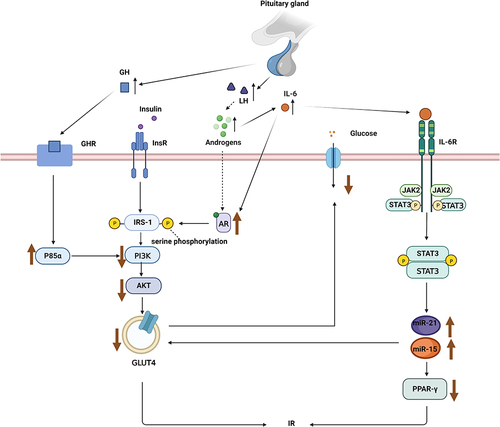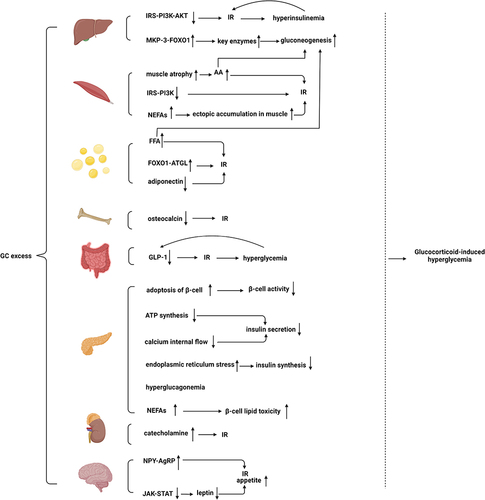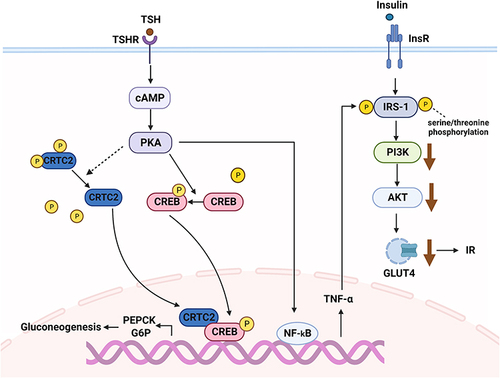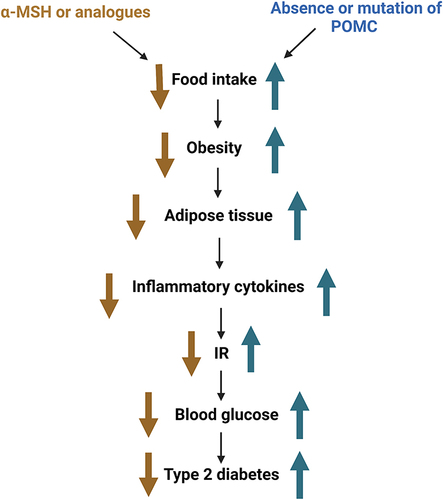Figures & data
Figure 1 The regulation mechanism of luteinizing hormone (LH) and growth hormone (GH) on glucose homeostasis. LH indirectly affects glucose homeostasis by interfering with related signaling pathways through androgens and inflammatory mediators, while GH interferes with insulin signaling through p85α.

Figure 2 Excessive GCs act on the above-mentioned organs to induce glucose metabolism disorders and eventually lead to hyperglycemia.

Figure 3 The regulatory mechanism of thyroid stimulating hormone (TSH) on glucose metabolism. TSH induces gluconeogenesis and insulin resistance through the TSHR/cAMP/PKA pathway.


